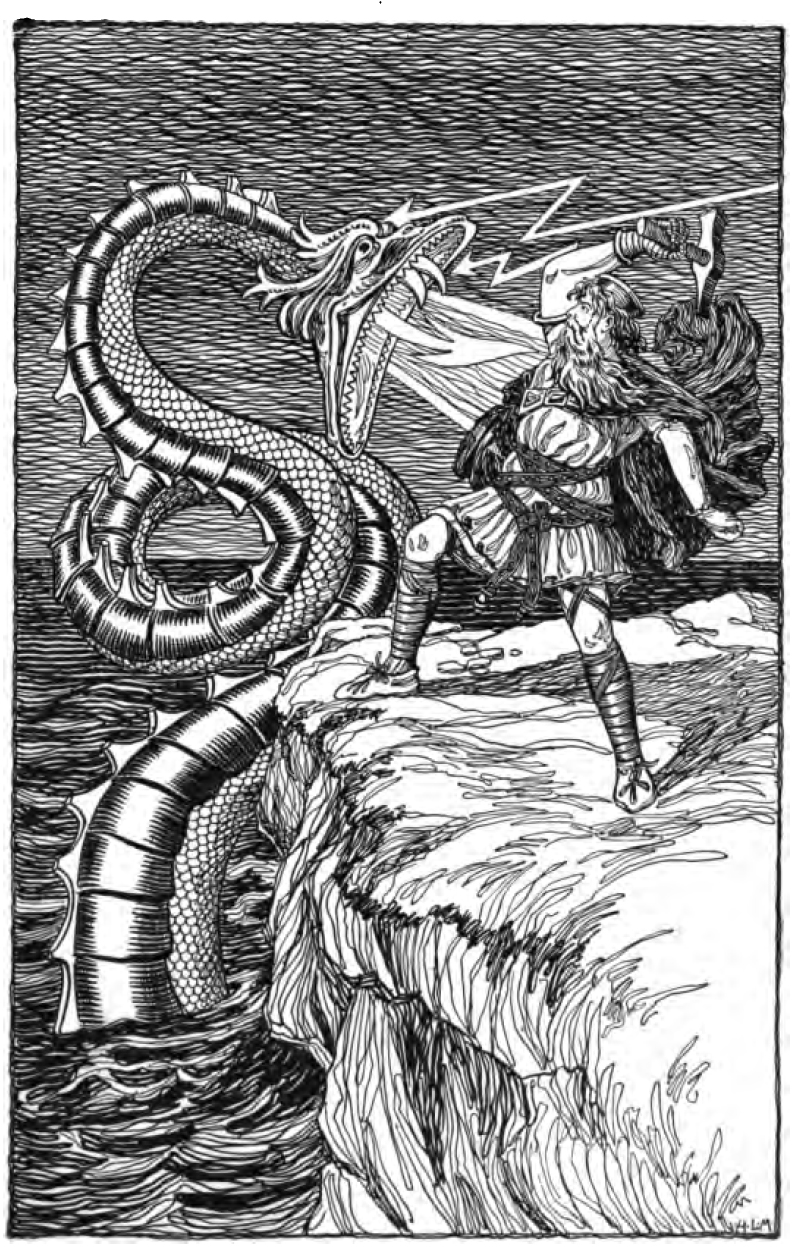

Additionally, other characters from Norse mythology that appear in the Marvel Universe are Odin, Freyja, Brunnhilde/Valkyrie and the Valkyrior, Heimdall, Hela, Balder, Sif, and Fenrir. Also, Loki (Thor's adopted brother in this version) is one of the most prominent villains in the Marvel Universe, serving as one of the main antagonists in the Marvel Cinematic Universe franchise. In the Marvel Universe, the Norse Pantheon and related elements play a prominent part, especially Thor, who has been one of the longest-running superheroes for the company and has had a starring role in both The Avengers comics and the 2012 film of the same name.See also: Thor in comics Comics American comics Tolkien was said to have been heavily influenced by Norse mythology which brought on many debates about structural and theoretical approaches to mythology. In Germany, the rediscovery of Norse mythology became popularized by transforming its art-religion context to an alternative spiritual practice. In Germany, Richard Wagner borrowed characters and themes from Norse mythology to compose the four operas that make up Der Ring des Nibelungen ( The Ring of the Nibelung), though he also utilized medieval German sources and Germanized the names of the Norse gods. In Britain, William Morris composed poetry such as Sigurd the Volsung on Norse legendary subjects as well as translating Icelandic sagas into English. The rediscovery of Norse mythology allows it to be understood under an arti-religious context through analysis of its functionalization with for various national, religious, and cultural renewals in various countries. Germany and England were Christianized far earlier than the Scandinavian countries and much of their own traditions were lost. Reintroduction to popular culture Īntiquaries of the 19th century such as George Webbe Dasent brought the mythology of Scandinavia back to the popular notice of many people in Germany and England in both cases, Norse mythology was recognized as the latest surviving form of Germanic paganism. Storytelling was an important aspect of Norse mythology and centuries later, with the rediscovery of the myth, Norse mythology once again relies on the impacts of storytelling to spread its agenda. In the later 20th century, references to Norse mythology became common in science fiction and fantasy literature, role-playing games, and eventually other cultural products such as Japanese animation. With the widespread publication of Norse myths and legends at this time, references to the Norse gods and heroes spread into European literary culture, especially in Scandinavia, Germany, and Britain. The Norse mythology, preserved in such ancient Icelandic texts as the Poetic Edda, the Prose Edda, and other lays and sagas, was little known outside Scandinavia until the 19th century. JSTOR ( October 2015) ( Learn how and when to remove this template message).Unsourced material may be challenged and removed.įind sources: "Norse mythology in popular culture" – news Please help improve this article by adding citations to reliable sources.

This article needs additional citations for verification.


 0 kommentar(er)
0 kommentar(er)
